2022 Triumph Tiger 1200 pricing announced
Triumph have revealed an enormously revamped Tiger 1200 range for 2022, with far reaching changes that are set to transform the brand’s big adventure machines in more ways than one, while covering a broad variety of rider needs across the versions offered.
Furthermore, the Tiger 1200 family will be backed by the surety of a new three-year/unlimited kilometre factory warranty for extra peace of mind.
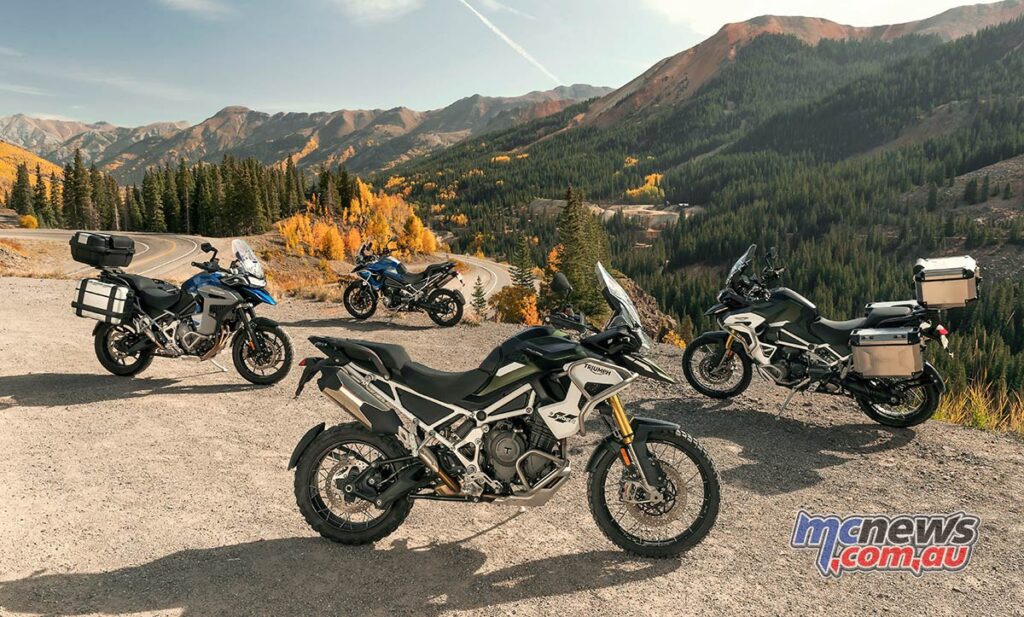
This isn’t one of those minor updates dressed as an all new-model situation either. The Tiger 1200 will arrive in GT versions with a road orientated loadout, while the Rally versions are more off-road orientated and there’ll be five specific models with varying level of specification and inclusions between the two.
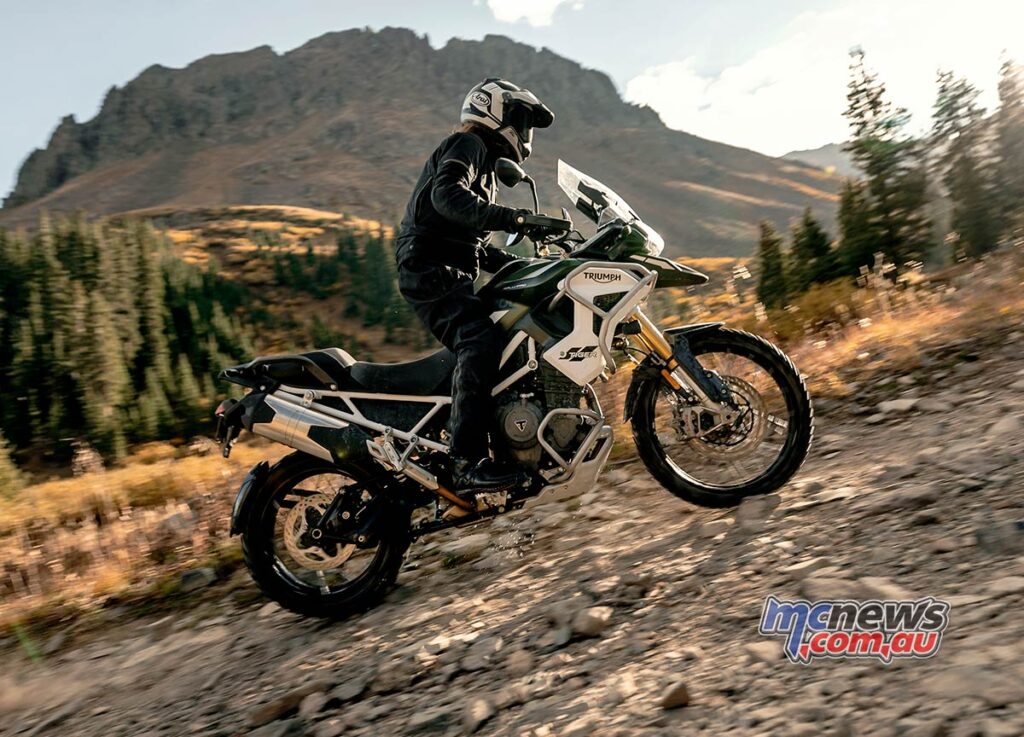
Triumph also shared they’ve paid attention to the BMW 1250 GS as a point of comparison in this segment, promising the new Tiger 1200s now trump all the competition pretty resoundingly in various ways. They were pretty proud to mention that the new Tiger 1200s will out-spec and under price the competition in that comparison too, once you take into account the many packages and accessories needed for a fair comparison in some cases.
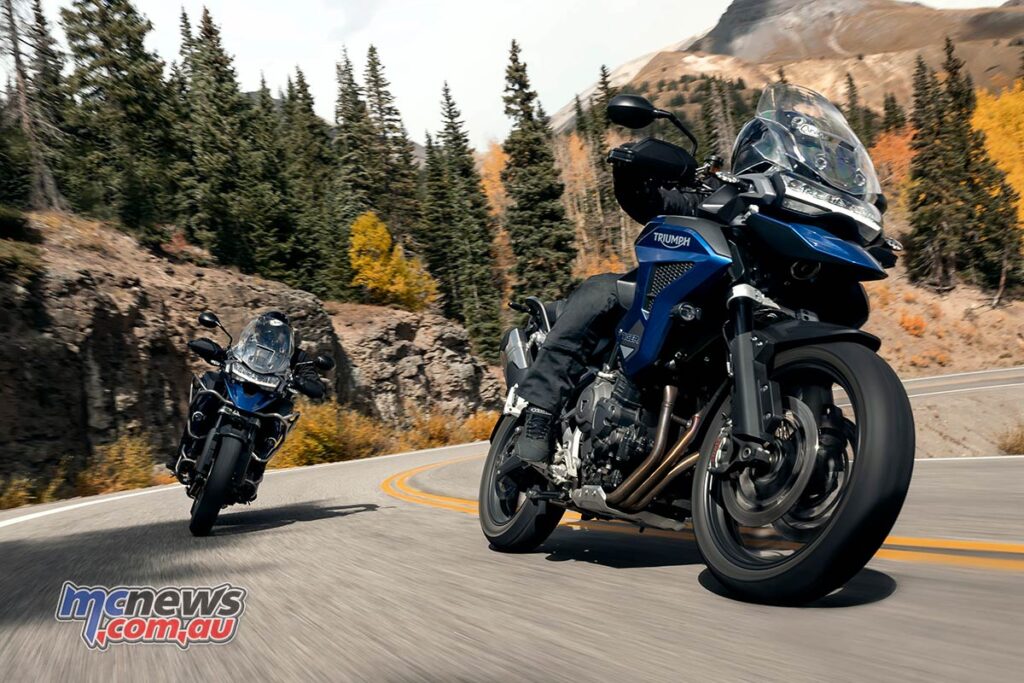
That’s not a case of copying what someone else offers either, but simply seeing what riders value and then aiming to do better across the range, without missing anything that people consider a must-have, like the shaft final drive in this segment. That inclusion in particular was seen as a must, offering low maintenance and peace of mind for distance touring.
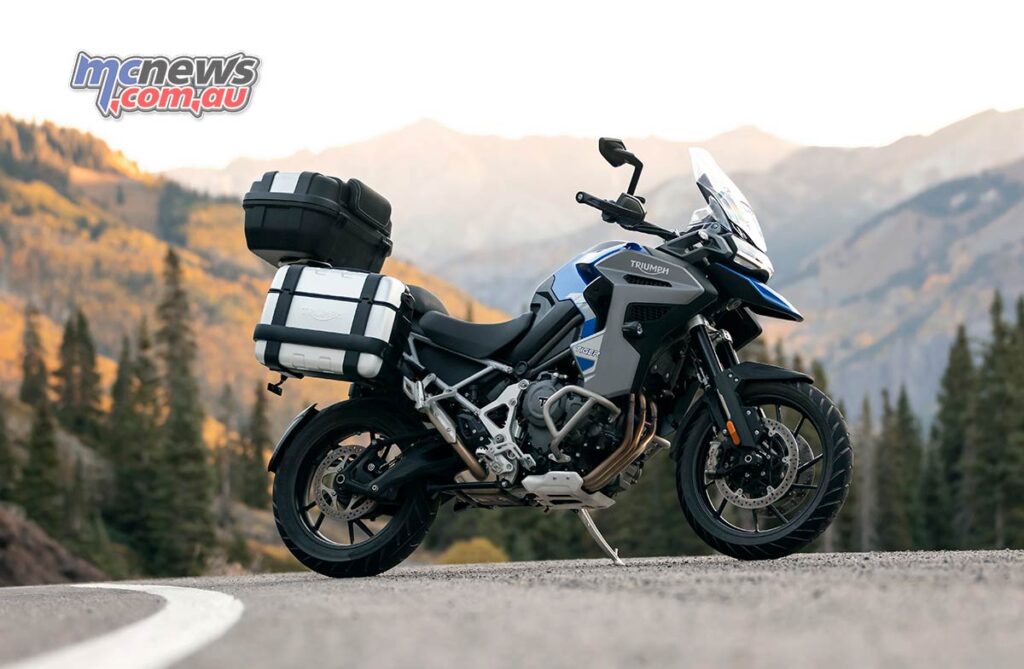
Interestingly that’s seen some new additions like blind spot detection on some variants, where active cruise control didn’t make the cut based on the rider feedback Triumph gathered. No doubt internet pundits will have lot to say about that, but it’s fair to say when this research is done they concentrate on those who’d actually buy their machines, rather than just those who’ve got an opinion on what’s been done wrong with every bike release ever.
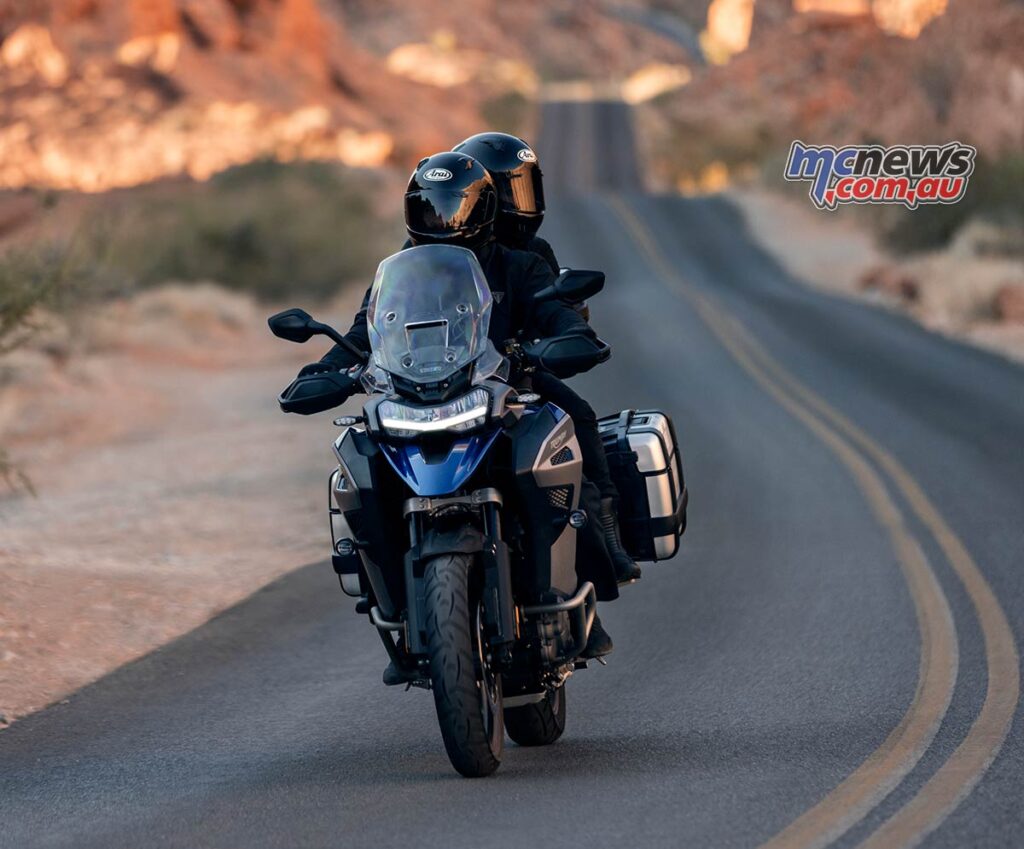
As far as the variants on offer there’s three in the road family, the Tiger 1200 GT, GT Pro and GT Explorer, with Explorer models being equipped with 30 litre fuel tanks as standard. The off-road orientated versions are the Tiger 1200 Rally Pro and the Rally Explorer.
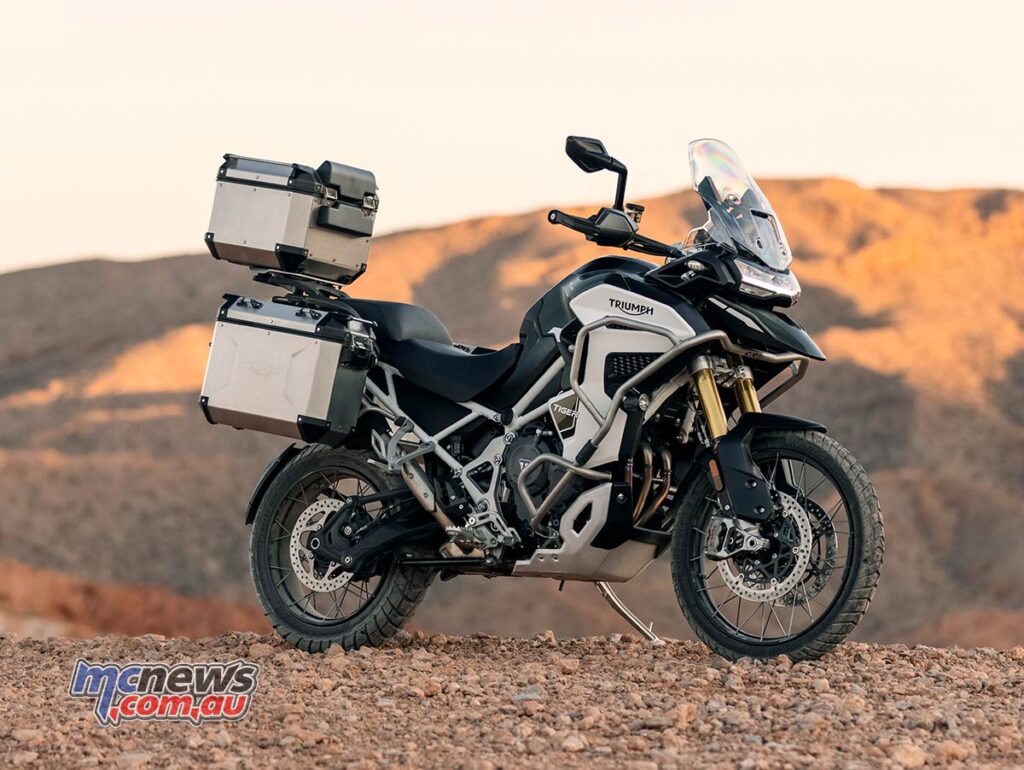
All Tiger 1200s will now run a new 1160 cc triple-cylinder engine, with T-plane triple crank and new firing order, which Triumph promise offers greater character and tractability down low. That’s delivering 148 bhp, up nine over the outgoing model, while acceleration and responsiveness are apparently improved too. Firing order is 180-270-270, making for an un-even staccato.
In other words 110.4 kW at 9000 rpm, while the torque figures is 130 Nm (96 ft-lbs) at 7000 rpm, a bump of 8 Nm peaking a little lower in the rev range, while the overall capacity is down 55 cc, with a bore and stroke of 90 x 60.7 mm, despite the performance boost.
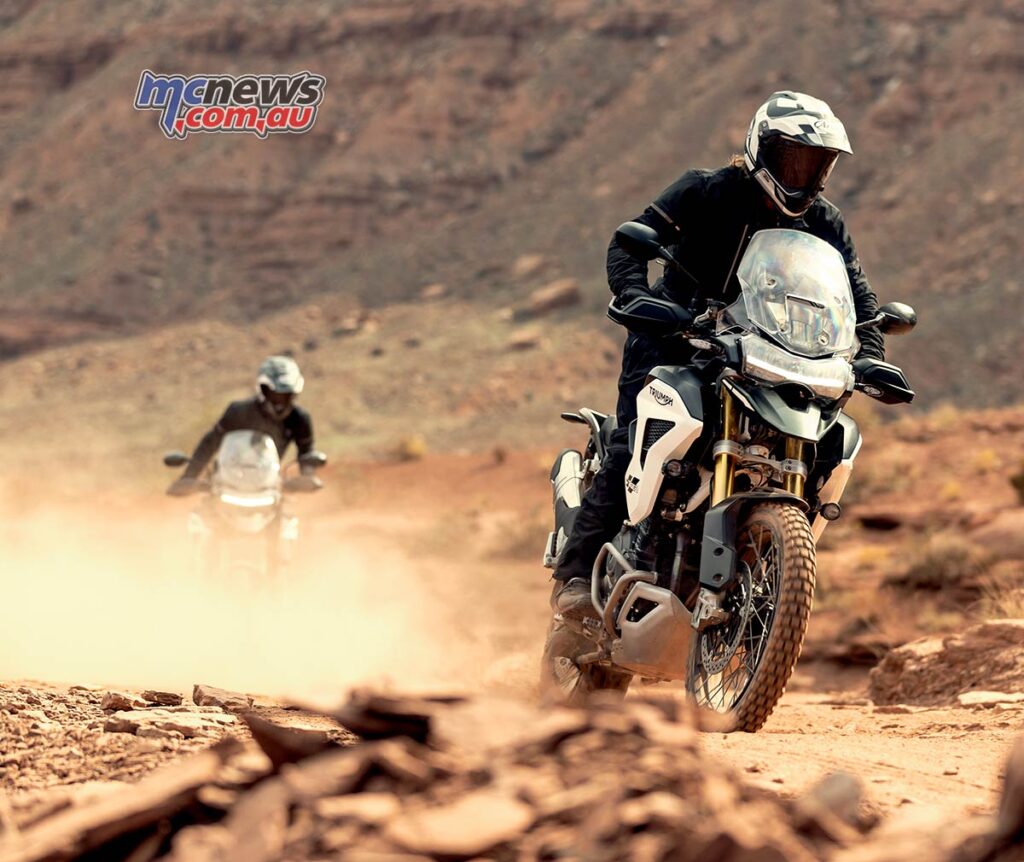
One particular point of note is that low down tractability is meant to be increased, with a feel more like a twin in this configuration and low-rpm scenario, alongside better off-road feel and connection for the rider according to Triumph. That’s also matched by a more twin-like sound down low too apparently, while about 90 Nm or torque is available from 3000 rpm, and that power curve looks very linear before flattening off around the 8500 rpm mark.
A new exhaust is also featured and was another area of weight loss despite having to meet Euro5, and mass centralisation and minimising the system was apparently a big focus here.
A new twin radiator design has also been adopted, allowing the engine to be mounted further forward, improving cooling, reducing heat directed at the rider and slimming down the front end visually.
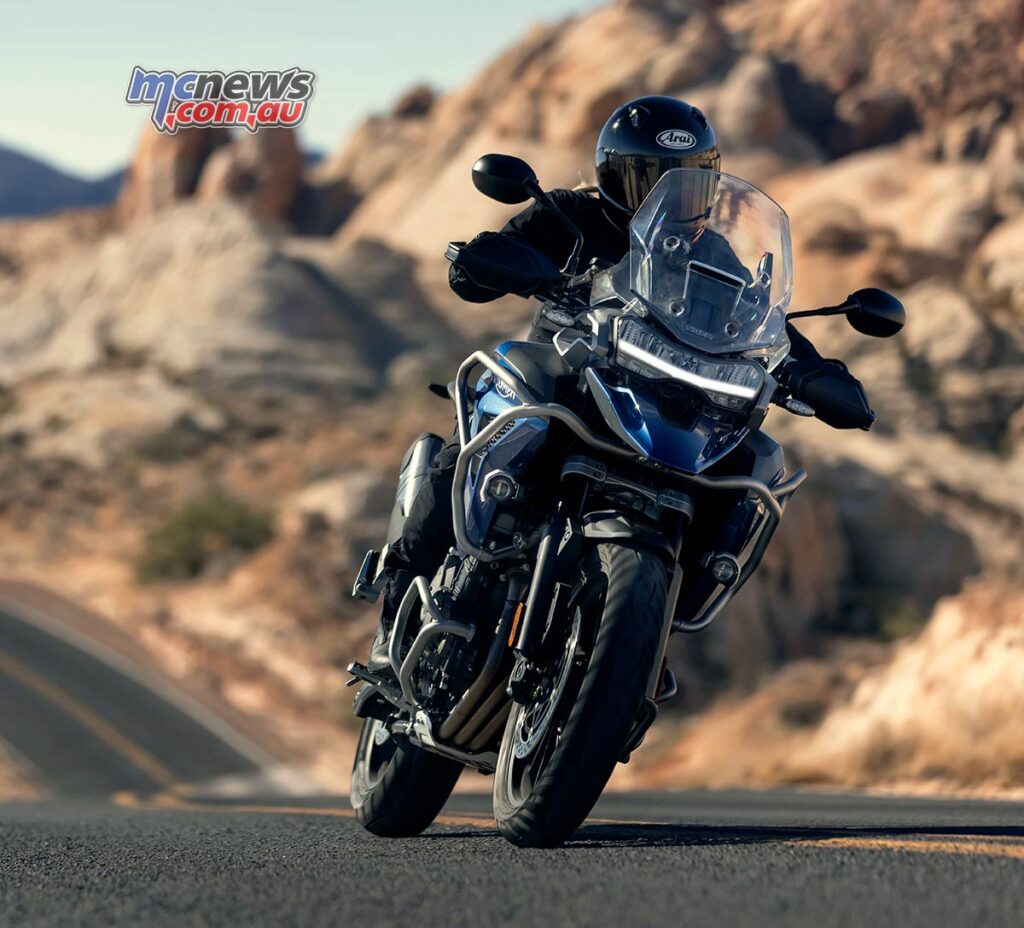
That’ll be a powerplant that needs testing in real world conditions to ascertain its character, but certainly sounds interesting. The other massive change is shedding 25 kg over the outgoing models, which is an astonishing amount of weight, and now leaves the Tiger 1200 up to 17 kg lighter than it’s closest comparable-spec competitor according to the British manufacturer.
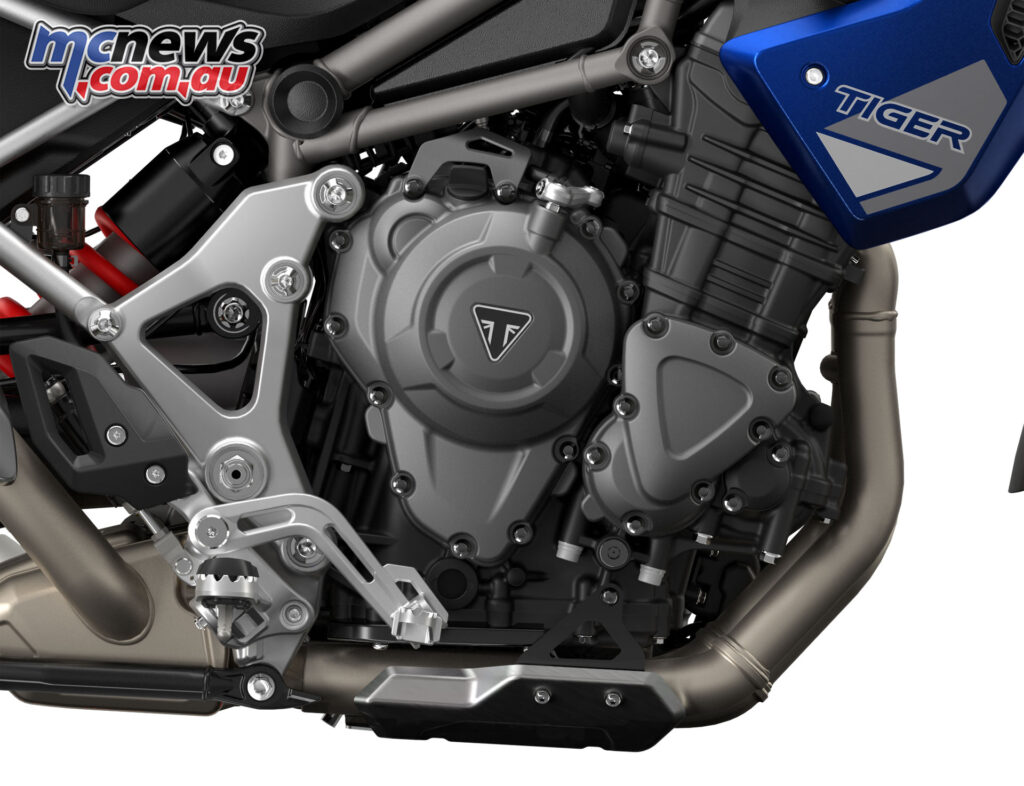
All models run new aluminium tanks to help keep weight to a minimum, with 20 L units on the GT, GT Pro and Rally Pro variants, which are good for up to 400 km. In comparison the 30 L tanks on the GT and Rally Explorer variants offer a 600 km potential range out of the box.
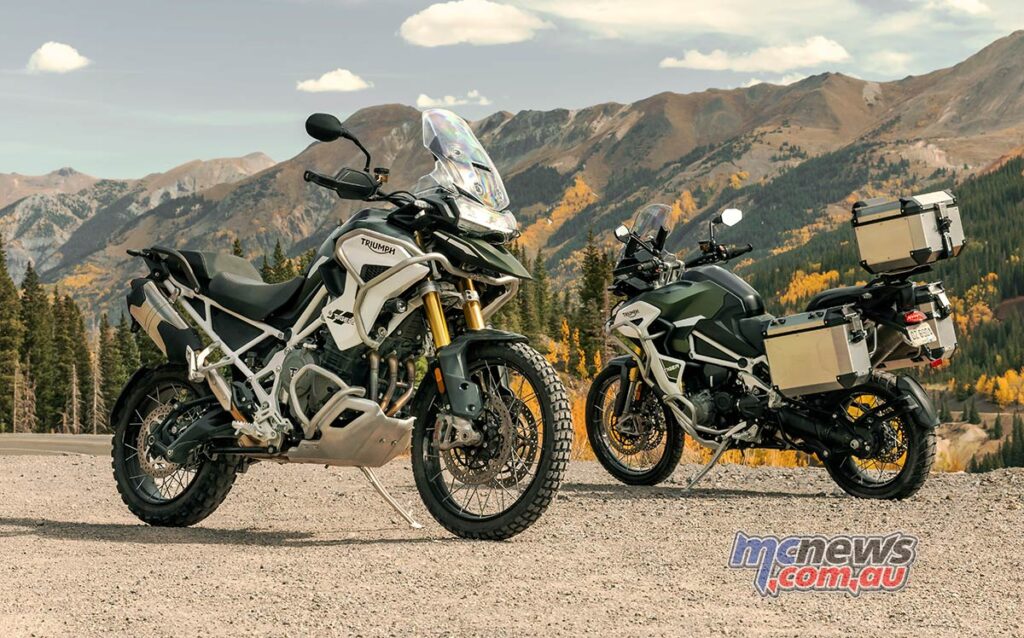
To achieve that overall weight saving figure there’s an all-new lightweight frame, with bolt on sub-frame and pillion hangers, alongside a new lighter and stronger Tri-Link swingarm. The new Tri-Link swingarm for instance saves 1.5 kg over the previous single-sided system, and runs a smaller and lighter bevel box.
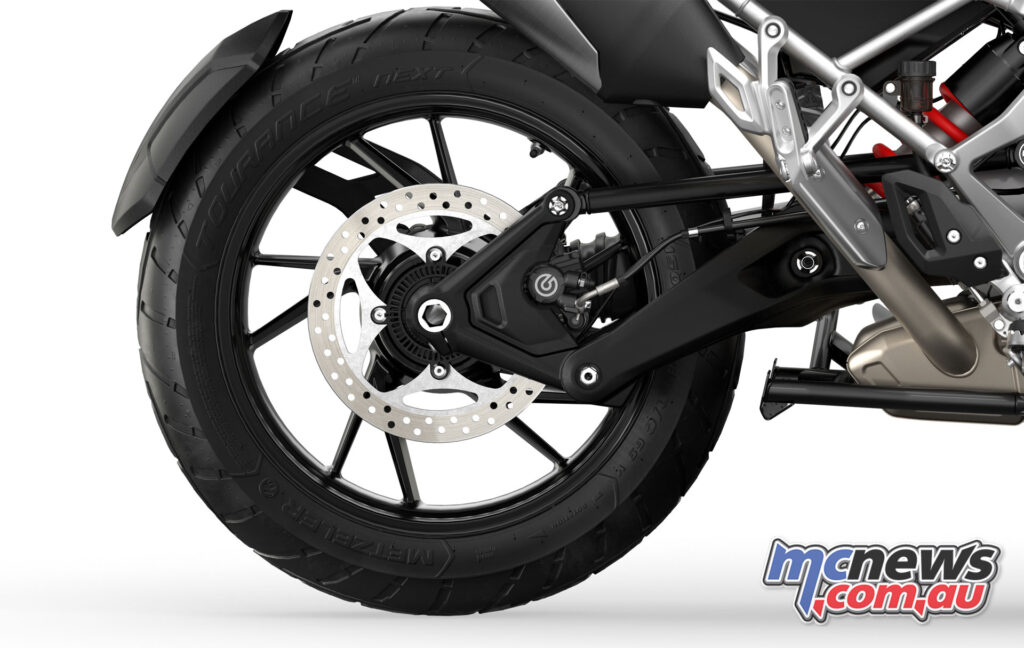
The new frame design saves 5.4 kg, with the bolt-on aluminium sub-frame contributing to that reduction, with the frame also helping slim down the bike between the legs, aiding standing on the bike as well as generally getting a foot down.
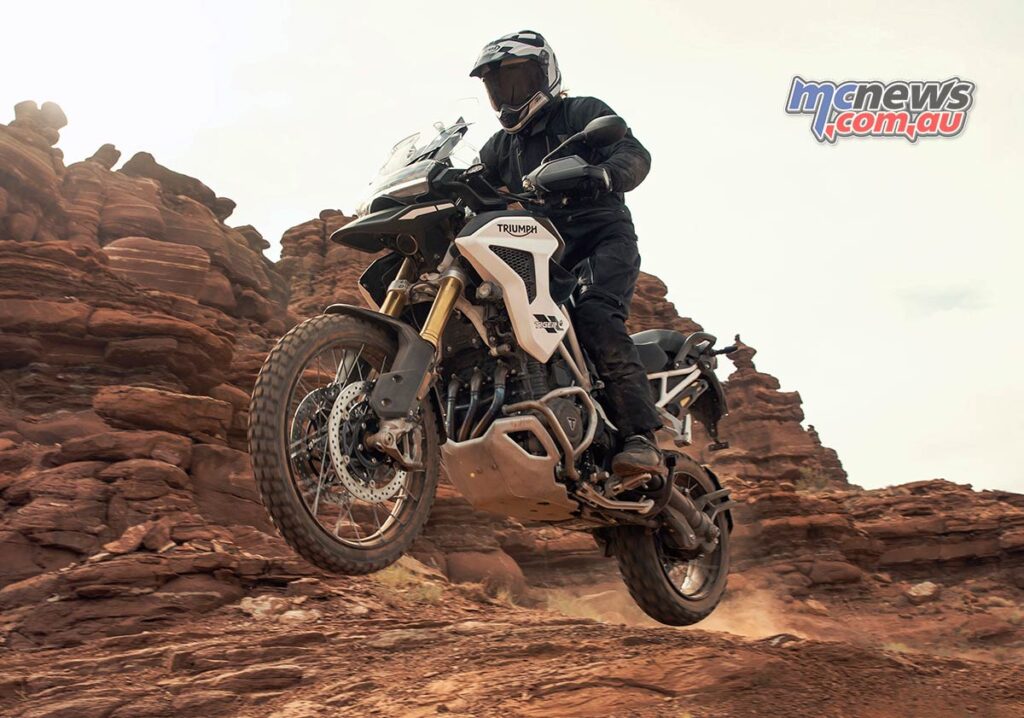
Showa provide semi-active suspension across all models, with 49 mm USD forks and a monoshock with automatic electronic preload adjustment. On the GT versions that’s a system offering 200 mm of travel at the front and rear with semi-active damping, while the Rally variants boast 220 mm travel at both ends with settings to match.
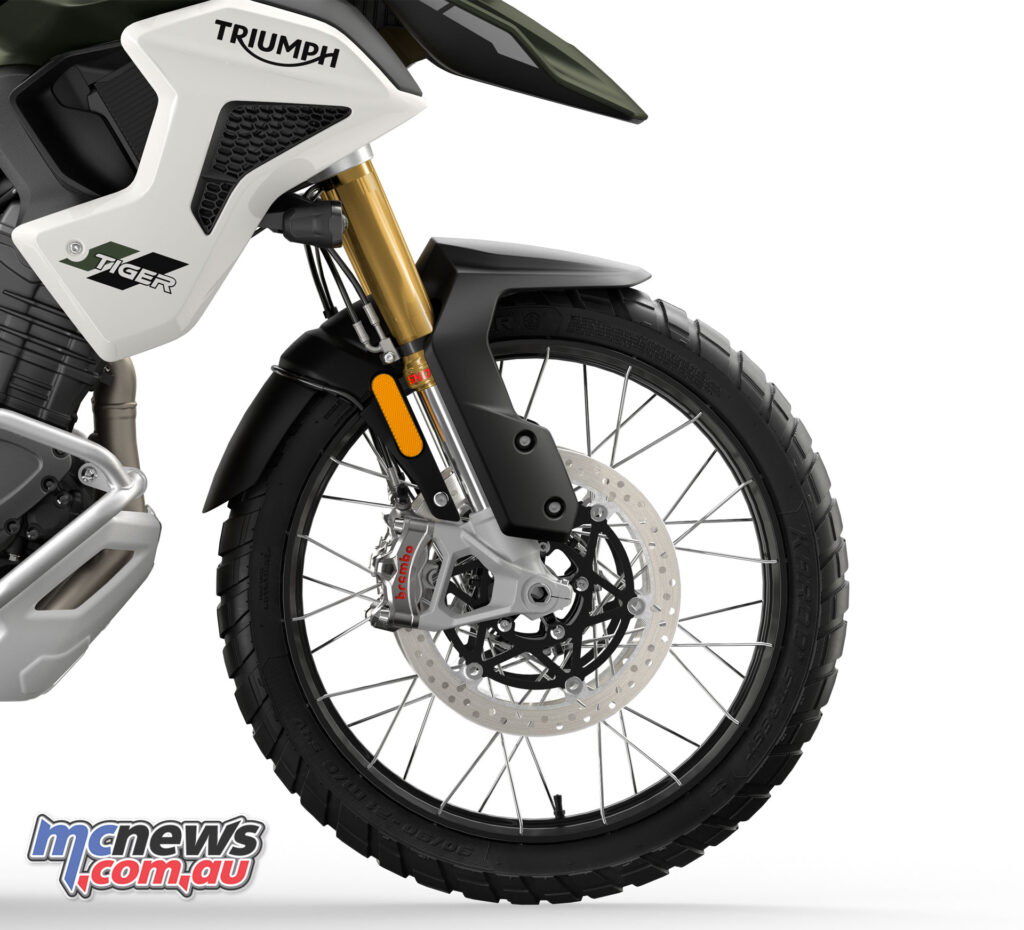
Preload automatic to the load detected and the rider can pick a preferred damping setting, with nine possible levels, from 1 which is the comfort end of the spectrum through to 9 which is sporty, with the mid-point of five being for ‘normal’ riding. These parameters are further tailored to the riding modes, depending on whether a road or off-road mode is chosen.
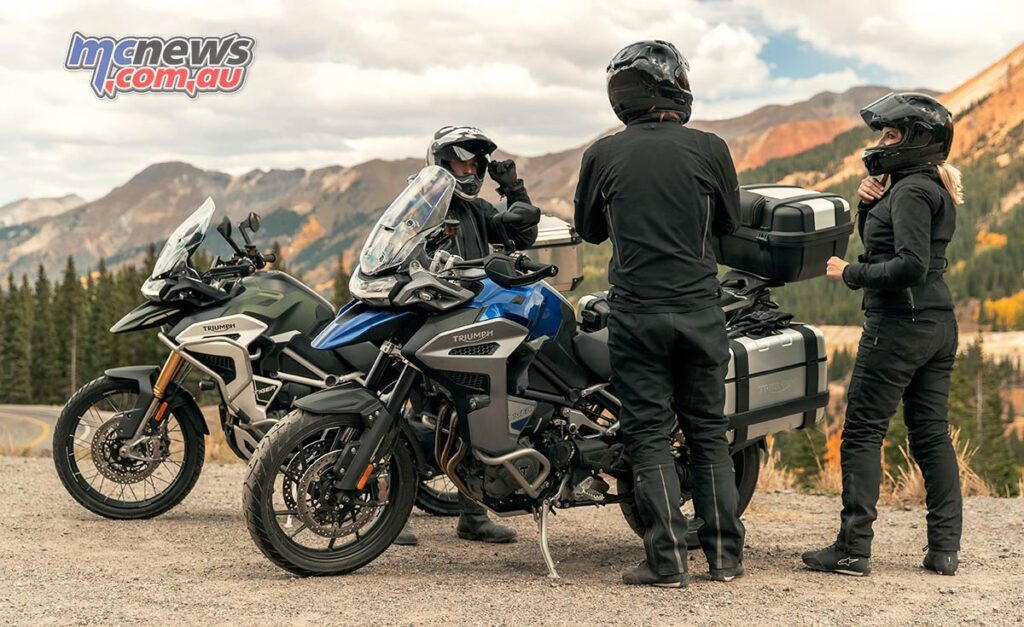
We also see specific wheel setups between the Rally and GT versions, with the Rally Pro and Rally Explorer to run a 21 inch front and 18 inch rear tubeless spoked wheel setup designed specifically for off-road use. The GT, GT Pro and GT Explorer on the other hand run a 19 inch front and 18 inch rear with cast aluminium wheels.
Those wheel choices are joined by the Metzeler Karoo Street tyre on the Rallies, while the GTs will arrive with Metzeler Tourance rubber in comparison. Michelin Anakee Wild tyres are also handbook approved for off-road riding, for those looking for something a big more hard nosed in that area.
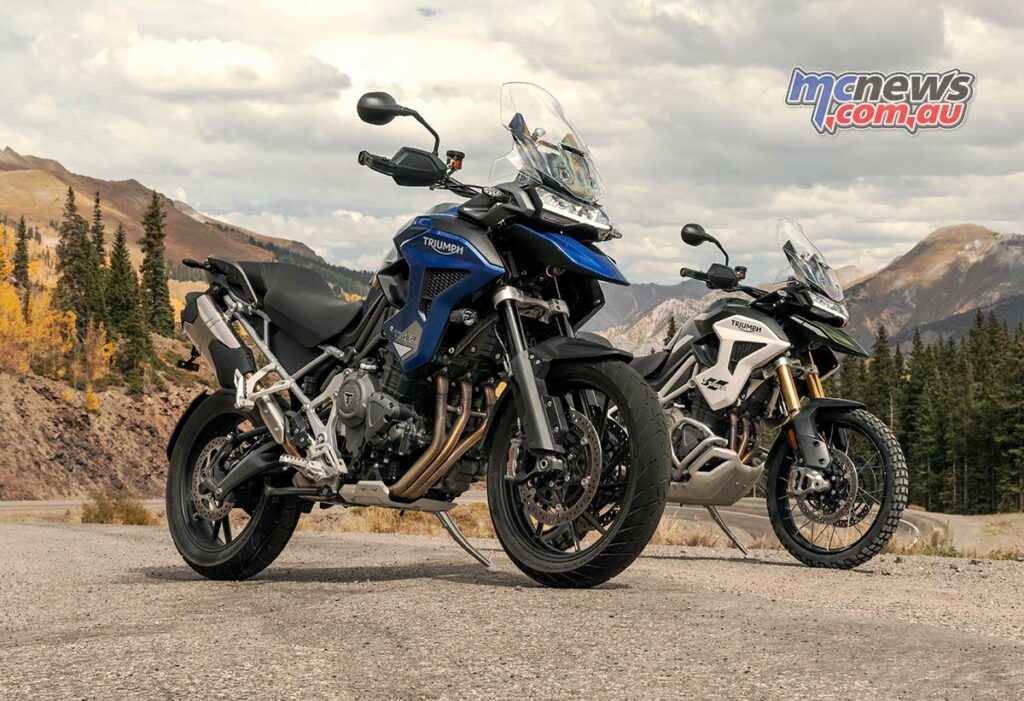
There’s a top-end brake system, with dual Brembo Stylema monobloc four-piston calipers up front on 320 mm floating rotors, matched to a Magura HC1 span-adjustable master-cylinder and lever combo, with separate reservoir. The 282 mm rear rotor is matched to a Brembo single-piston caliper meanwhile. Optimised Cornering (OC) ABS is also run thanks to the IMU unit.
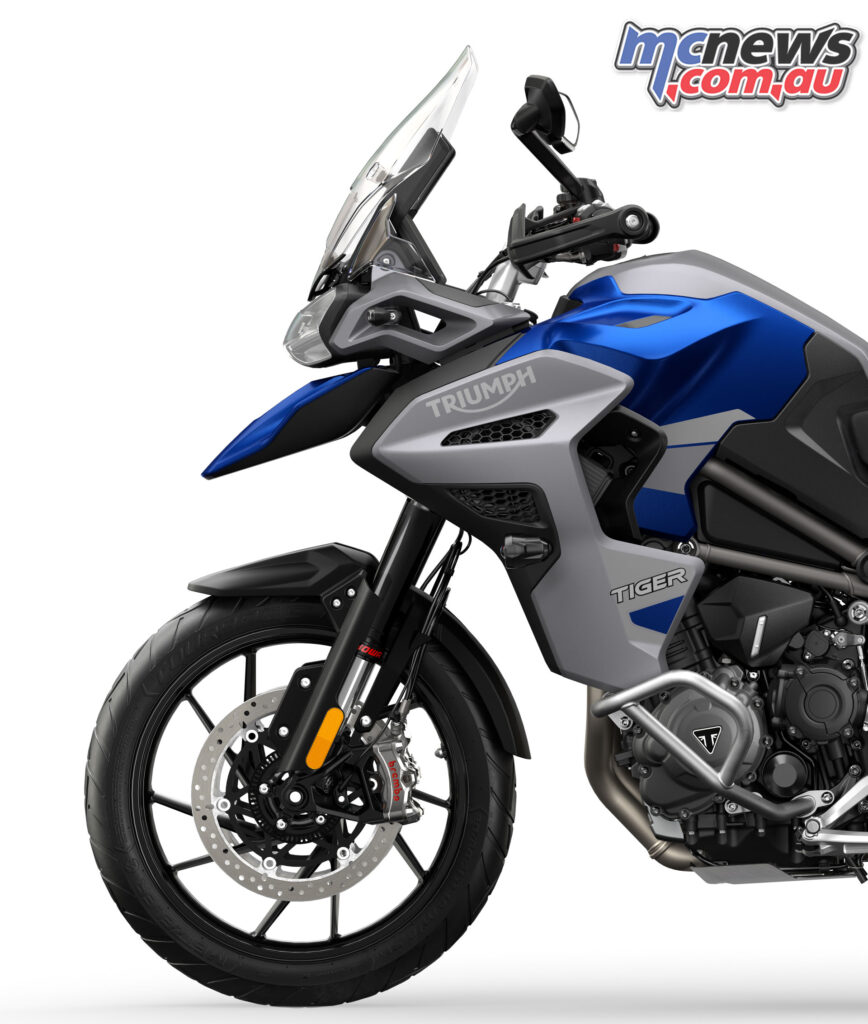
That blind spot assist radar system was developed with Continental and will only be found on the Explorer versions to clarify, and activates a light on the mirror on the corresponding side when a car is located in the blind-spot, while lane change assist will flash that light if a rider changes lane with a vehicle approaching.
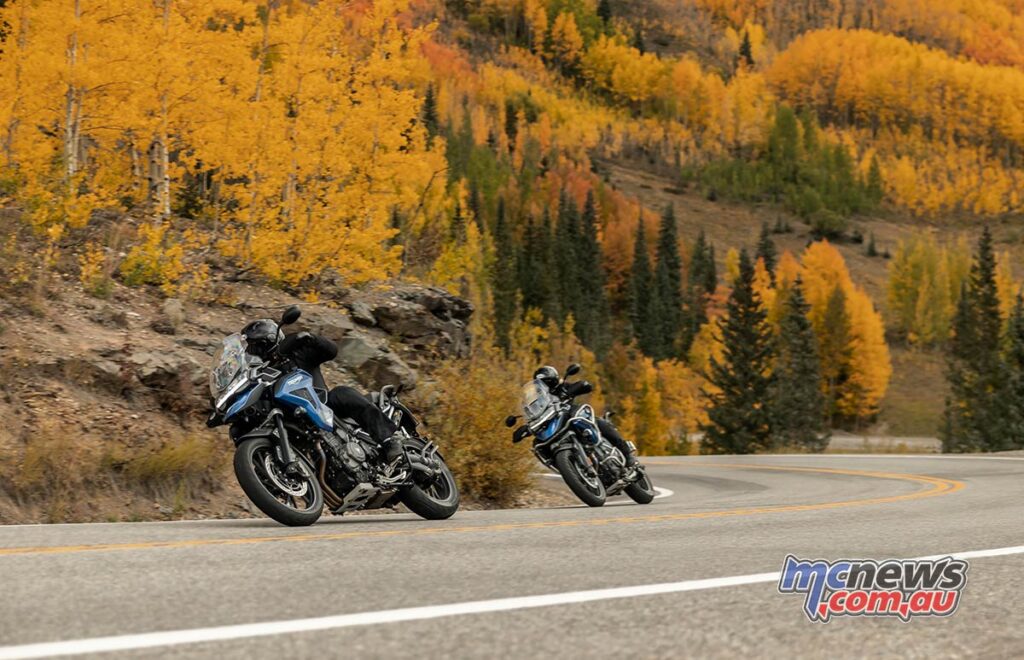
Triumph explained the inclusion of this technology, but no active cruise control in saying that the active (radar managed) cruise control is a controversial topic amongst the riders they talked to, where the blind spot assist was considered a must have.
A new 7 inch TFT is also found across all models with an integrated connectivity system and runs an optically bonded display, with new interface including GoPro control.
Traction control is also optimised, and has cornering functionality thanks to the IMU, as with the ABS, while up to six riding modes are offered, alongside a keyless system that includes the ignition, steering lock and fuel cap. The Triumph Shift Assist system is also tweaked and standard on everything but the base GT, offering clutchless up and down shifting.
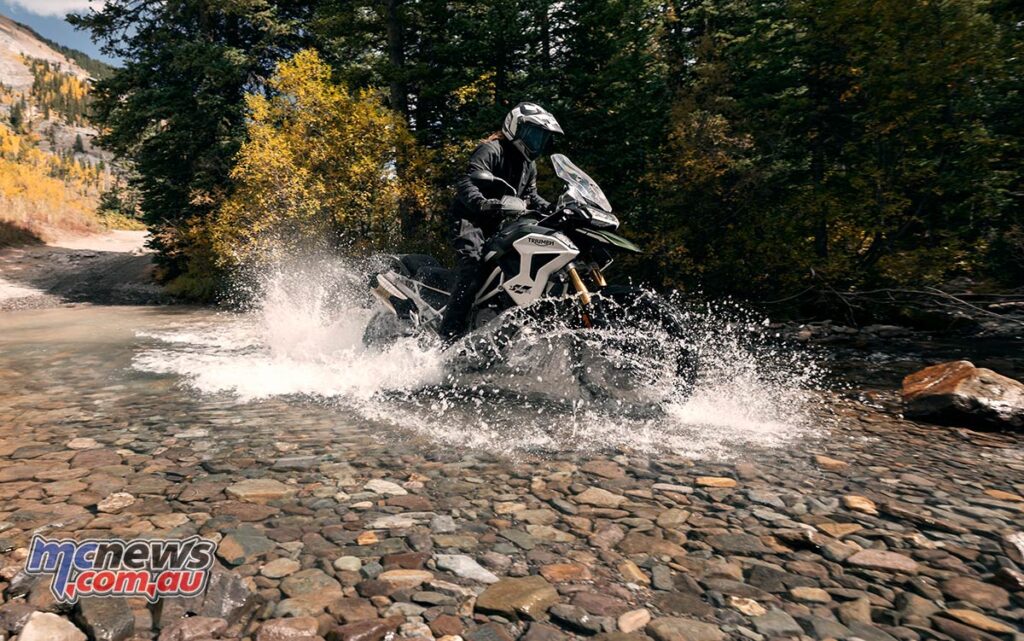
The Tiger 1200 GT for instance gets Rain, Road and Sport modes, with the GT Pro and GT Explorer adding Off-Road and Rider (custom) modes. The Rally Pro and Rally Explorer meanwhile get all five modes plus Off-Road Pro, which allows full ABS and traction control deactivation. Regular Off-road mode in comparison turns ABS to off-road with the rear off, while traction control is also set to an off-road setting.
Traction control can also be independently turned off via the TFT display.
There’s also a new LED headlight with DRL, and integrated cornering light – although this isn’t available on the GT model, with it being the same story with the Hill Hold system which the base GT misses.
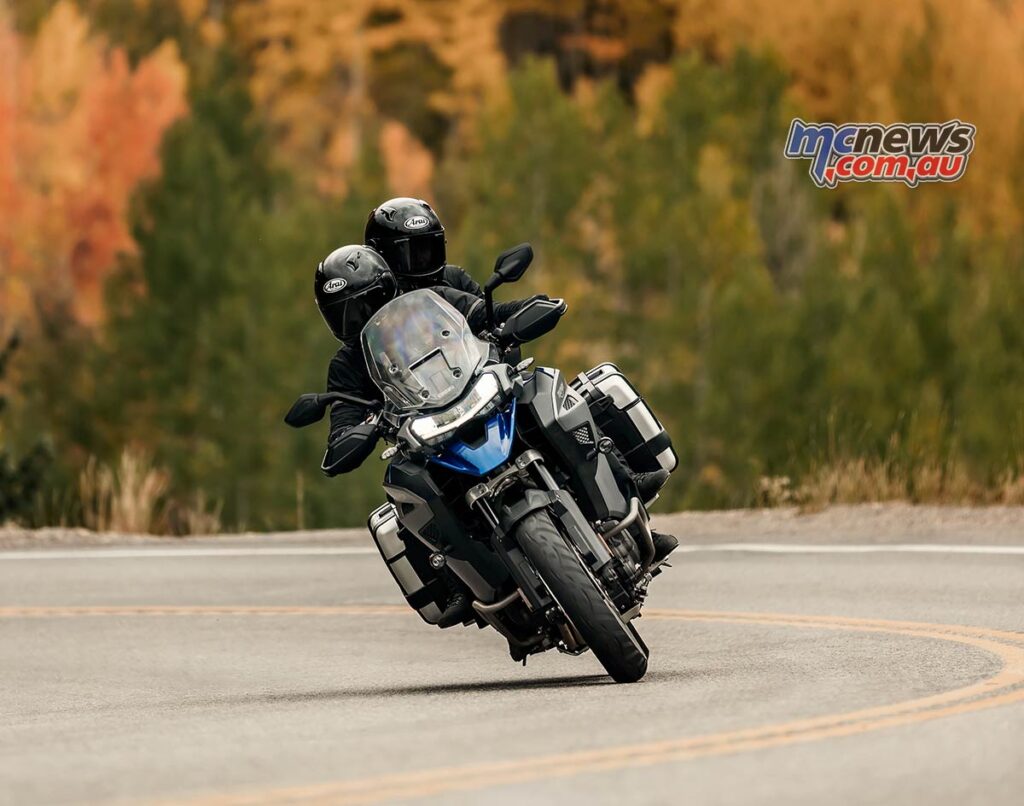
Both Rally Explorer and GT Explorer also get heated grips and seats as standard fitment, along with the TPMS or tyre pressure monitoring system.
Also new is the rider ergonomics, with seat heights varying between models, but Triumph explaining the new Tiger 1200s are particularly narrow across the front of the seat, which will pay dividends when it comes to easily reaching the ground, especially for shorter riders, with the figure on paper perhaps not being the best point of comparison if you can get onto one to see the difference in person.
On the GT, GT Pro and GT Explorer, that seat height is adjustable between 850 and 870 mm, while the rally Pro and Rally Explorer with the additional suspension travel can be adjusted between 875 and 895 mm, with a ‘Low Seat’ accessory reducing those figures by 20 mm.
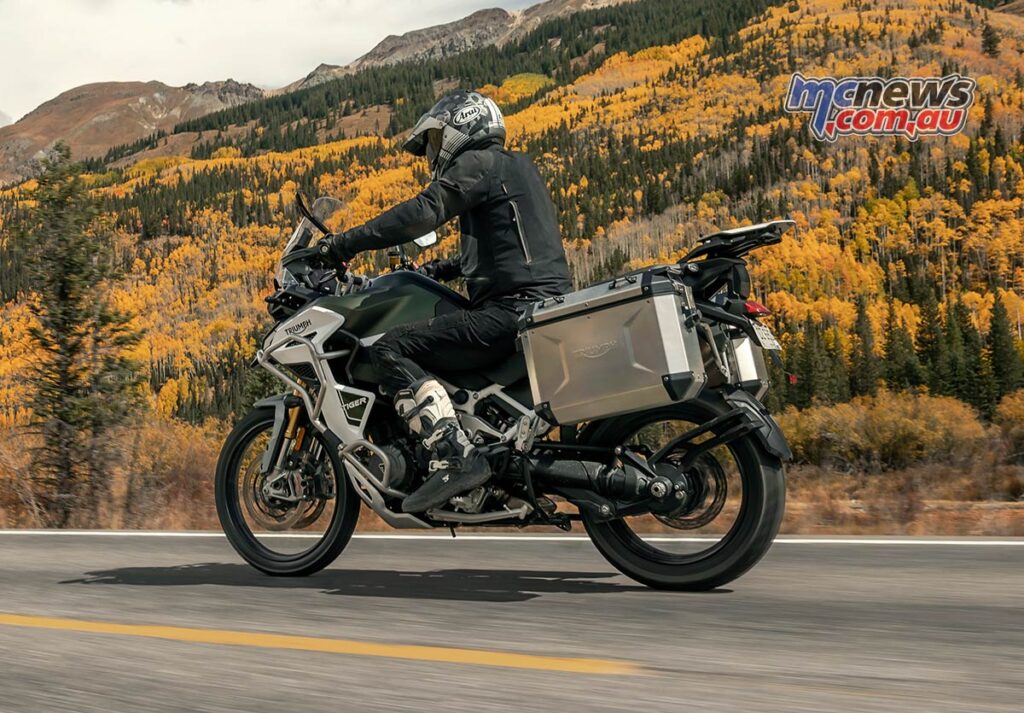
An adjustable screen is also fitted, with an adjuster bar that allows one-hand adjustment, with handlebar positions also specific for each model, while also being 20 mm wider than the outgoing version. On both Explorer versions the ‘bars are also 16 mm taller, while footpegs are also repositioned.
Other updates which will probably be best appreciated in person are the promise of a higher standard of detailing and finish, accompanying the new bodywork, with a more ‘dominant adventure focused stance’ part of the tweaked ergonomics, and new colours for each family of bike.
The Triumph Tiger 1200 variants will also come with a three-year unlimited mileage warranty, while 16,000 km/12 month service intervals are aimed at keeping upkeep costs down.
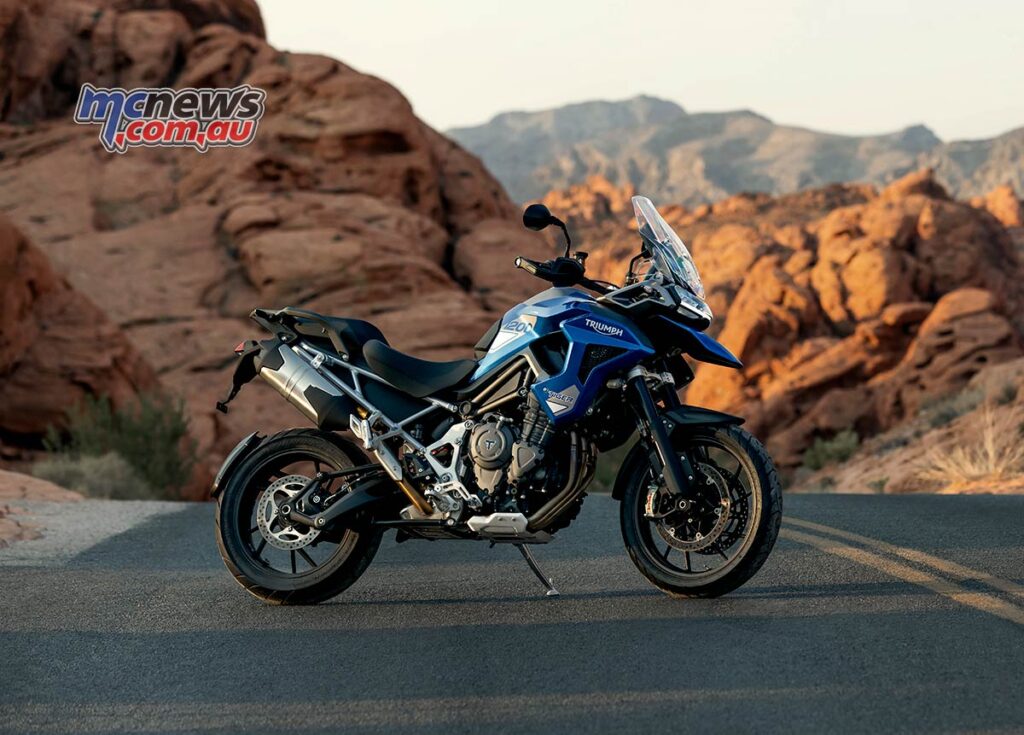
Finally the Tiger 1200 range will have over 50 genuine accessories available, covering a host of needs, such as a full luggage system, various bike protection like engine and tank protection, heated seats for models which don’t have them standard, and a new Triumph Sena comms system that runs a bespoke software system for the TFT.
All models will feature the moulded handguards, with an aluminium skid guard on the GT Pro and GT Explorer and aluminium sump guard on both Rally versions. Engine protection bars are also standard on the GT Explorer, plus Rally Pro and Rally Explorer. Only the Tiger 1200 Rally Explorer runs the fuel tank protection bars.
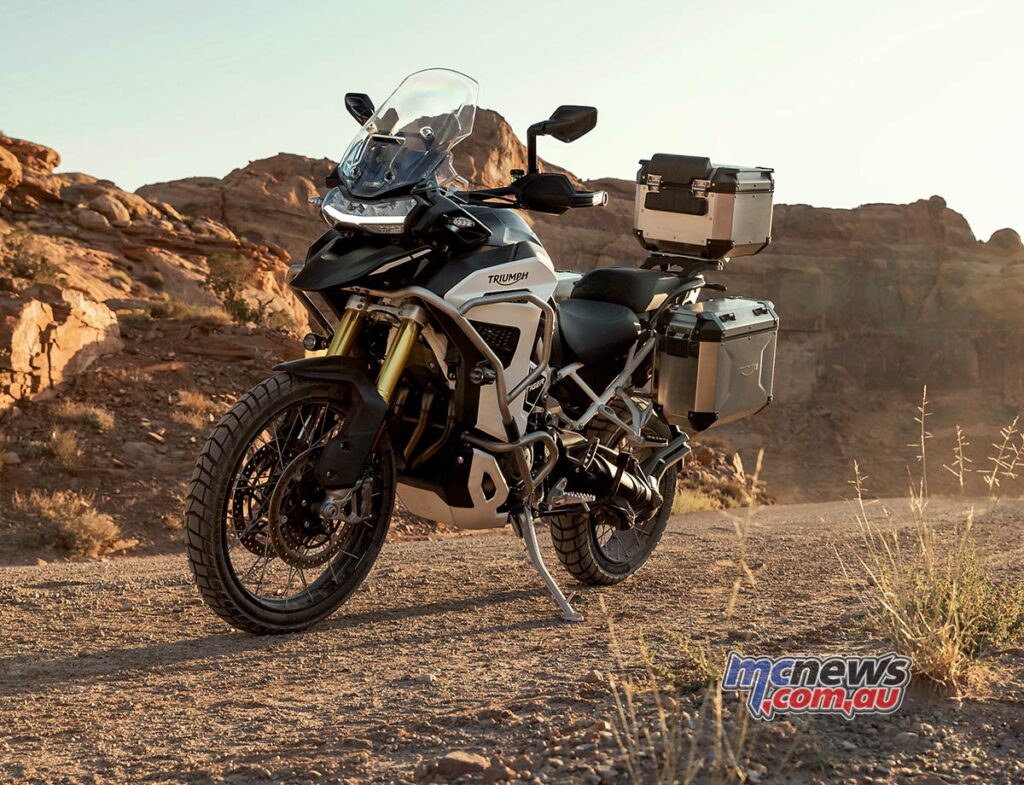
The back-lit switch cubes are also standard across all models, as well as an underseat USB storage, and electronic cruise control, a centre stand and heated grips are found across all models except the GT, which can fit them as accessories.
The 2022 Triumph Tiger 1200 GT will be available in Snowdonia White, while the Tiger 1200 GT Pro and Tiger 1200 GT Explorer will be available in Lucerne Blue, Sapphire Black and the base Snowdonia White.
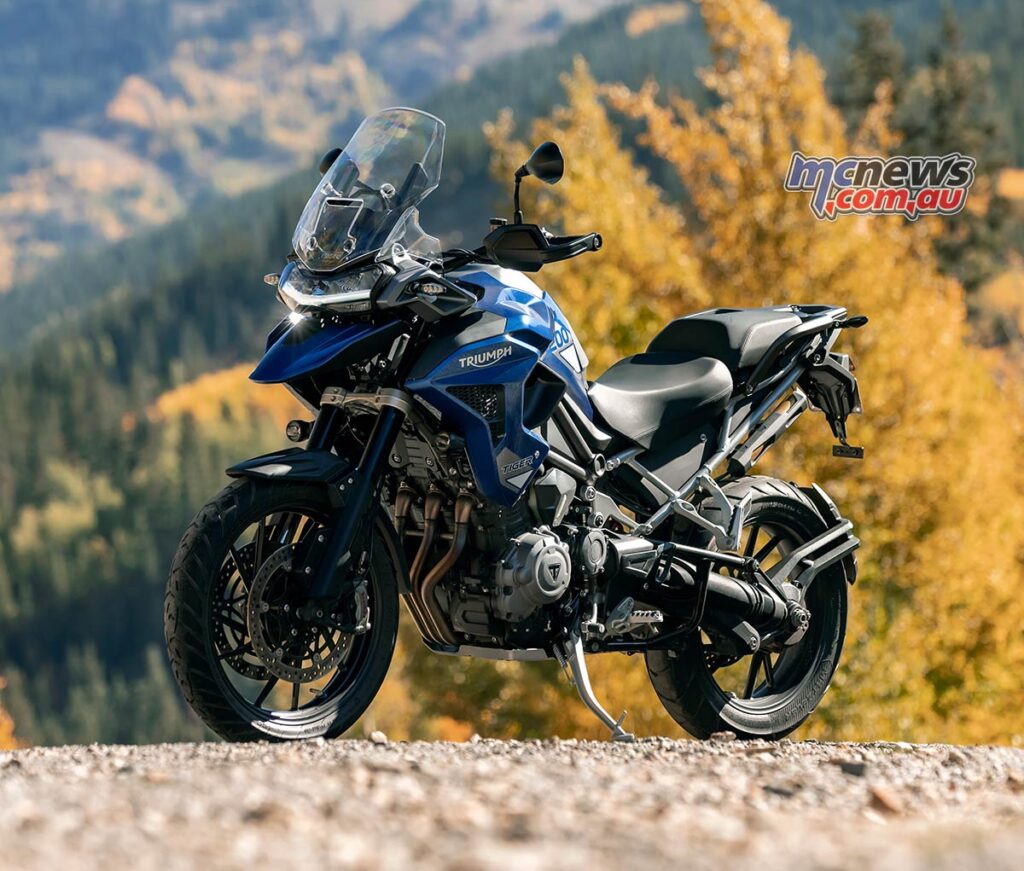
The 2022 Triumph Tiger 1200 Rally Pro and Tiger 1200 Rally Explorer are available in Matt Khaki, or Sapphire Black with the Snowdonia White the base option. The Rally variants also get the white frame, inspired by the Tiger Tramontana rally bike. All colour options except the base Snowdonia White as listed as chargeable colour options, so are likely to demand a premium.
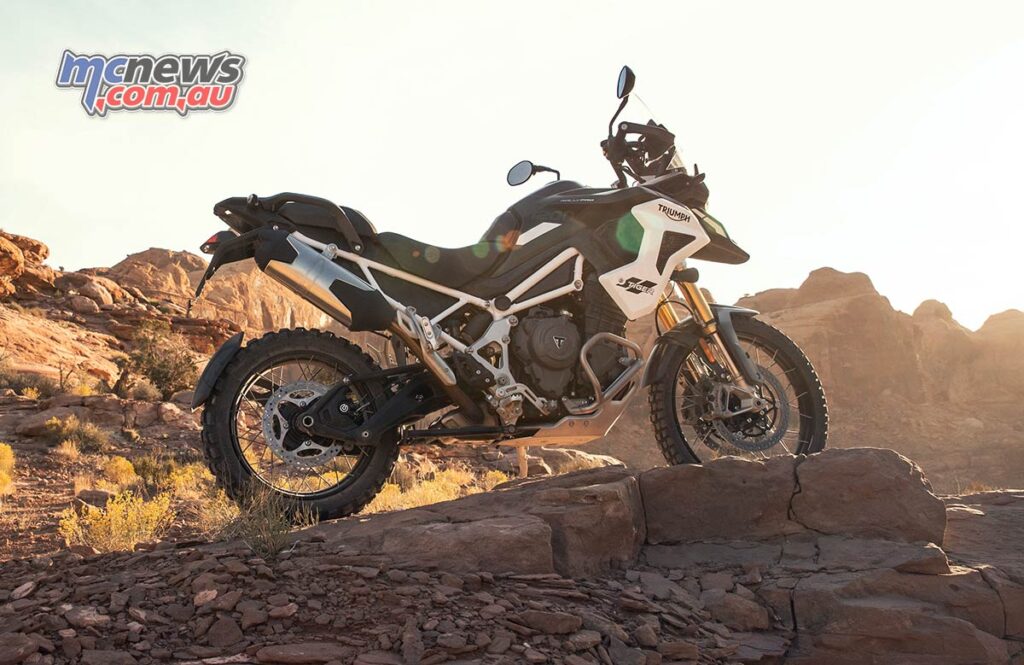
The Tiger 1200 range, comprising the GT Pro and GT Explorer as well as the Rally Pro and Rally Explorer, is expected to arrive in Australian dealers in the second quarter of 2022. The base GT version won’t be coming to Australia.
Tiger 1200 GT family: Tailor made for the perfect road-focused adventure ride, with 19-inch front and 18-inch rear cast aluminium wheels
- Tiger 1200 GT Pro From $29,990 rideaway
- Tiger 1200 GT Explorer From $32,600 rideaway
Tiger 1200 Rally family: Tailor made for the perfect all-terrain adventure, with 21-inch front and 18-inch rear tubeless spoked wheels
- Tiger 1200 Rally Pro From $31,800 rideaway
- Tiger 1200 Rally Explorer From $33,950 rideaway
2022 Triumph Tiger 1200 Specifications
| Specifications | |||||
| Model | GT | GT Pro | GT Explorer | Rally Pro | Rally Explorer |
| Type | Liquid-cooled, 12 valve, DOHC, inline 3-cylinder | ||||
| Capacity | 1160 cc | ||||
| Bore | 90.0 mm | ||||
| Stroke | 60.7 mm | ||||
| Compression | 13.2:1 | ||||
| Maximum Power | 150 PS / 148 bhp (110.4 kW) @ 9,000 rpm | ||||
| Maximum Torque | 130 Nm (96 lbft) @ 7,000 rpm | ||||
| Fuel System | Multipoint sequential electronic fuel injection with electronic throttle control | ||||
| Exhaust | Stainless steel 3 into 1 header system with underslung primary silencer and side mounted secondary silencer | ||||
| Final Drive | Shaft drive | ||||
| Clutch | Hydraulic, wet, multi-plate, slip & assist | ||||
| Gearbox | 6 speed | ||||
| Chassis | |||||
| Model | GT | GT Pro | GT Explorer | Rally Pro | Rally Explorer |
| Frame | Tubular steel frame, with forged aluminium outriggers. Fabricated, bolt-on aluminium rear subframe. | ||||
| Swingarm | Twin sided “Tri-Link” aluminium swingarm with twin aluminium torque arms. | ||||
| Wheels | F – Cast aluminium, 19 x 3.0in. R- Cast aluminium, 18 x 4.25in | F- Spoked (tubeless), 21 x 2.15in. R – Spoked (tubeless), 18 x 4.25in. | |||
| Front Tyre | Metzeler Tourance F – 120/70R19 (M/C 60V TL). R – 150/70R18 (M/C 70V TL) | Metzeler Karoo Street F – 90/90-21 (M/C 54V TL). R – 150/70R18 (M/C 70V TL) | |||
| Front Suspension | Showa 49mm USD forks with semi-active damping. 200mm travel. | Showa 49mm USD forks with semi-active damping. 220mm travel. | |||
| Rear Suspension | Showa monoshock with semi-active damping and automatic electronic preload adjustment. 200mm wheel travel. | Showa monoshock with semi-active damping and automatic electronic preload adjustment. 220mm wheel travel. | |||
| Front Brakes | Brembo M4.30 Stylema monoblock radial calipers, OC-ABS, twin 320mm floating discs. Magura HC1 span adjustable radial master cylinder with separate reservoir. | ||||
| Rear Brakes | Brembo single piston caliper, OC-ABS, single 282mm disc. Rear master cylinder with remote reservoir. | ||||
| Instruments | Full-colour 7” TFT instrument pack with My Triumph Connectivity System | ||||
| Dimensions & Weights | |||||
| Model | GT | GT Pro | GT Explorer | Rally Pro | Rally Explorer |
| Length | 2245 mm | 2245 mm | 2256 mm | 2270 mm | 2296 mm |
| Width | 849 mm (handlebars), 982 mm (handguards) | ||||
| Height Without Mirrors | 1436 – 1497 mm (adjustable screen) | 1487 – 1547 mm (adjustable screen) | |||
| Seat Height | 850 – 870 mm (adjustable) | 875-895 mm (adjustable) | |||
| Wheelbase | 1560 mm | ||||
| Rake / Trail | 24.1° / 120 mm | 23.7° / 112 mm | |||
| Wet weight* | 240 kg | 245 kg | 255 kg | 249 kg | 261 kg |
| Fuel Tank Capacity | 20 litres | 20 litres | 30 litres | 20 litres | 30 litres |























